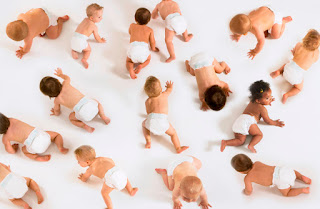Even before the pandemic, sperm donation was not an easy business. Each country follows its own logic in introducing regulations. Britain and the Netherlands have made anonymous sperm donation illegal, contributing to sperm shortages. France and Spain hold a contradictory view insisting donors must be anonymous. In Canada, payments to donors are prohibited, in most European countries their expenses can be compensated. USA regulations are more flexible. In Hong Kong and Switzerland, only married straight couples are eligible for treatment with donor sperm. France, surprisingly, also excludes lesbians and single women. This legal mess has created an opportunity for sperm traders to export sperm. All they need to trade sperm is dry ice, the internet and DHL.
*****
Globally, the sperm business is over $4 billion. But
it is not simple.
California Cryobank and Fairfax Cryobank, USA’s two largest sperm banks
approve only about 1% of the applicants. Among the key reasons for rejection
are low sperm count, donors with health issues, or sperm not doing well after
freezing.
White donors must be at least 5 feet 9 inches tall.
Shorter people are not eligible, because clients don’t want them. Black or Brown
donors can be shorter, but sperm donation is not popular among them. (And white
women may not want their sperm).
Donors should be willing to sacrifice their love life.
Between donations, they are required to practice abstinence to keep the sperm
count and quality high. With two visits a week to the sperm bank for several
months, sex has no place between visits.
*****
FDA requires that the sperm is frozen for six months,
and the donor is retested after six months. This is to make sure he doesn’t
suffer from AIDS or other diseases. To the innumerable tests, Covid tests are a
new addition. Sperm banks don’t pay until the sperm is ready for sale and the
donor is added to the bank’s catalogue.
Other than the innumerable tests, including physical,
psychological, personality, S.T.D screening, the donor gives blood, urine and semen
(this one is not for sale) samples. He then fills a bunch of forms. He must
specify his drug use, sexual history, talents, goals in life, education, all
the places he has traveled to recently. His features are scrutinized, he should
provide a childhood and adult photo, and write an essay or tape an interview.
The potential buyer may want to listen to his voice or read his essay.
Genetic testing is added to the tests. Ashkenazi Jews
are tested for a maximum number of genetic disorders. The reason could be their
strictly marrying within the community, risking inbreeding.
*****
Donating sperm is not at the donor’s convenience, but
the sperm bank’s. They are normally open during office hours from Monday to
Friday. This is one operation that has not switched to work-from-home.
Currently, the reopened American sperm banks are trying
to make it safe for the few men who are willing to visit them. Only a small
number is allowed to donate every hour. They undergo thermal screening, covid
tests. Masks must be worn at all times, except during the process of donation.
Pre-pandemic, the reputed sperm banks were already
investing close to $2000 per donor for recruitment and testing. They require an
agreement for the donor to commit at least one visit per week for 6 to 12
months. An active young man donating twice a week might earn $1500 a month.
*****
There is no legal limit, but the biggest sperm banks
have established policies that one donor’s sperm will not be allowed to father
more than 25 to 30 kids.
As to whether the donors can get in touch with their
children I will discuss tomorrow.
Ravi








